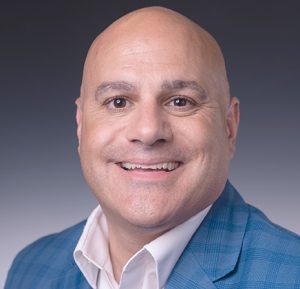ITHACA, N.Y. — Construction crews have completed “significant upgrades” totaling $15 million at the Cornell High Energy Synchrotron Source, or CHESS, a scientific-research facility in Ithaca.
With the upgrades complete, CHESS will be among the “five premier synchrotron source facilities for high-energy, high-flux x-ray studies in the world,” Empire State Development (ESD) contended in a Thursday news release.
Cornell University invested in capital improvements to CHESS, including its x-ray beamlines and experimental stations.
(Sponsored)

How CH Insurance’s BOOST Program Optimizes Group Benefits for Small Businesses
For small business owners, navigating the complexities of group benefits can be overwhelming. Between compliance regulations, cost considerations, and employee expectations, offering a competitive benefits package often feels like a

House of Representatives Passes $78 Billion Tax Package
On January 31, the House of Representatives overwhelmingly passed the Tax Relief for American Families and Workers Act of 2024, a tax package worth $78 billion. The bill was approved
As a result of the project, Cornell estimated that it would create 100 new “high-paying, high-technology” jobs in the region, while retaining 150 jobs at the facility. The project has already resulted in the creation of 66 new jobs at the lab, ESD noted.
“CHESS, and its expert staff, generate a lot of new technologies and require very sophisticated components. By working with local companies, CHESS stays at the scientific forefront internationally, and serves as a catalyst for advanced manufacturing in the region,” Joel Brock, director of CHESS, said in the ESD release.
ESD offered a $15 million “Southern Tier Soaring” Upstate Revitalization Initiative (URI) grant to support the upgrades and improvements to the CHESS facility. Of that total, $9 million covered equipment and materials, according to Cornell.
The National Science Foundation (NSF) also provided “significant” support during the upgrade, ESD said. CHESS utilizes funding from NSF and the National Institutes of Health for operations. Cornell said CHESS received $80 million from NSF for daily operations of the laboratory for the duration of the project, or $20 million per year.
By leveraging the facility’s capabilities and the URI grant, CHESS is “positioned to win” continued federal funding through 2024 and beyond, per the ESD release.
“Cornell University is one of our state’s great academic institutions, and it has been a leader in the growth of the Southern Tier’s economy,” Lt. Gov. Kathy Hochul, who made Thursday’s announcement, said. “The capital upgrades as part of the Upstate Revitalization Initiative ensure the advancement of innovative technologies at the research facility, securing its position as one of the top of its kind in the world. This investment continues the growth of the high-tech industry and the economy of the entire region.”
About CHESS
CHESS works at developing tools and techniques to explore biological, electronic, and structural materials. CHESS scientists and engineers develop new instrumentation, technologies and processing techniques that are “highly sought” by other global laboratories, universities and research organizations.
As new synchrotron technologies and processes are invented at CHESS, they will be transferred — along with development support — to New York companies who sell the products and services to global customers.
Built between 1978 and 1980, CHESS is a “high-intensity” x-ray source that provides x-ray facilities to researchers “from across the nation and around the world,” ESD said. It uses synchrotron light given off by charged particles — electrons and positrons — as they circulate in a ring at “nearly the speed of light.”
The x-ray beams generated at CHESS help scientists and researchers understand materials from airplane wings to cell membranes, and from pollutants in plants to matter under earth-core pressures, per the release.
Contact Reinhardt at ereinhardt@cnybj.com




